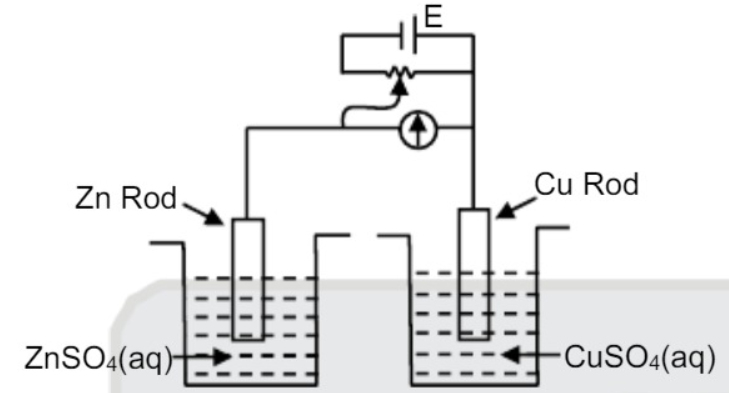Which of the following statements is correct? If E∘Cu2+∣Cu=0.34VandE∘H+∣H2=−0.0V
Cu2+ ions can be reduced by H2(g)
cu can be oxidised
Sn2+ ions can be reduced by H2
Sn can be oxidized by Cu2+
The correct Answer is:A, D
Step by step video, text & image solution for Which of the following statements is correct? If E_(Cu^(2+)|Cu)^(@)=0.34V "and"E_(H^+|H_2)^(@)=-0.0V by Chemistry experts to help you in doubts & scoring excellent marks in Class 11 exams.
Topper's Solved these Questions
- BOOK - NARENDRA AWASTHICHAPTER - ELECTROCHEMISTRYEXERCISE - Level 1 (Q.1 To Q.30)1videos
ELECTROCHEMISTRY
- BOOK - NARENDRA AWASTHICHAPTER - ELECTROCHEMISTRYEXERCISE - Level 1 (Q.91 To Q.120)1videos
ELECTROCHEMISTRY
- BOOK - NARENDRA AWASTHICHAPTER - DILUTE SOLUTIONEXERCISE - Level 3 - Match The Column1videos
DILUTE SOLUTION
- BOOK - NARENDRA AWASTHICHAPTER - GASEOUS STATEEXERCISE - Level 3 - Subjective Problems1videos
GASEOUS STATE
Similar Questions
Knowledge Check
- Question 1 - Select One or More
Which is/are correct among the following? Given the half cell EMFs
E∘Cu2+/Cu=0.337V,E∘Cu+∣Cu=0.521VACu+ disproportionatesBCu and Cu2+ comproportinatesCE∘Cu∣Cu2++E∘Cu+1∣Cu is positiveDE∘Cu2+∣Cu=−0.153V - Question 2 - Select One
If a small Cu rod is placed in an aqueous solution of ferrous salt, then which of the following will be observed? (E0Cu2−Cu=−0.34V,E0Fe2+Fe=−0.44V)
ACopper will be oxidisedBFe2+ will be reducedCNo reaction will take placeDFe2+will be oxidised - Question 3 - Select One
(CU+((aq)) is unstable in solution and undergoes simultaneous oxidation and reduction, according to the reaction
2Cu+(aq) Cu2+(aq)+Cu(s) choose E∘ for the above reaction if
ECu2+/Cu∘=0.34V and ECu2+/Cu+=0.15VA(−0.38)B(+0.49)C(+0.38V)D(+0.19V)
Why blue colour of CuSO4 solution gets discharged when zinc rod is dipped in it ? Given, E∘Cu+2/Cu=0.34VandE∘Zn+2/Zn=−0.76V
View SolutionWhat is ΔG∘ for the following reaction
Cu+2(aq)+2Ag(s)→Cu(s)+2Ag
E∘Cu+2/Cu=0.34VE∘Ag+/Ag=0.8VView SolutionFor the given cell arrangement identify incorrect statement
given E∘_(Cu2+/Cu) = 0.34V &E∘_(Zn2+/Zn)=−0.76V View Solution
View SolutionGiven the standard reduction potentials, which statement is correct?
Cu2(aq)+2e−→Cu(s)E∘=0.34V2H+(aq)+2e−→H2(g)E∘=0.0VCr3+(aq)+2e−→Cr(s)E∘=−0.73VView SolutionCu2+(aq.) is unstable in solution and under goes simultaneous oxidation and reduction according to the reaction
2Cu+(aq.)⇔Cu2+(aq.)+Cu(s)
Choose the correct E∘ for the above reaction if
E∘Cu2+/Cu=0.34VandE∘Cu2+/Cu+=0.15VView Solution

